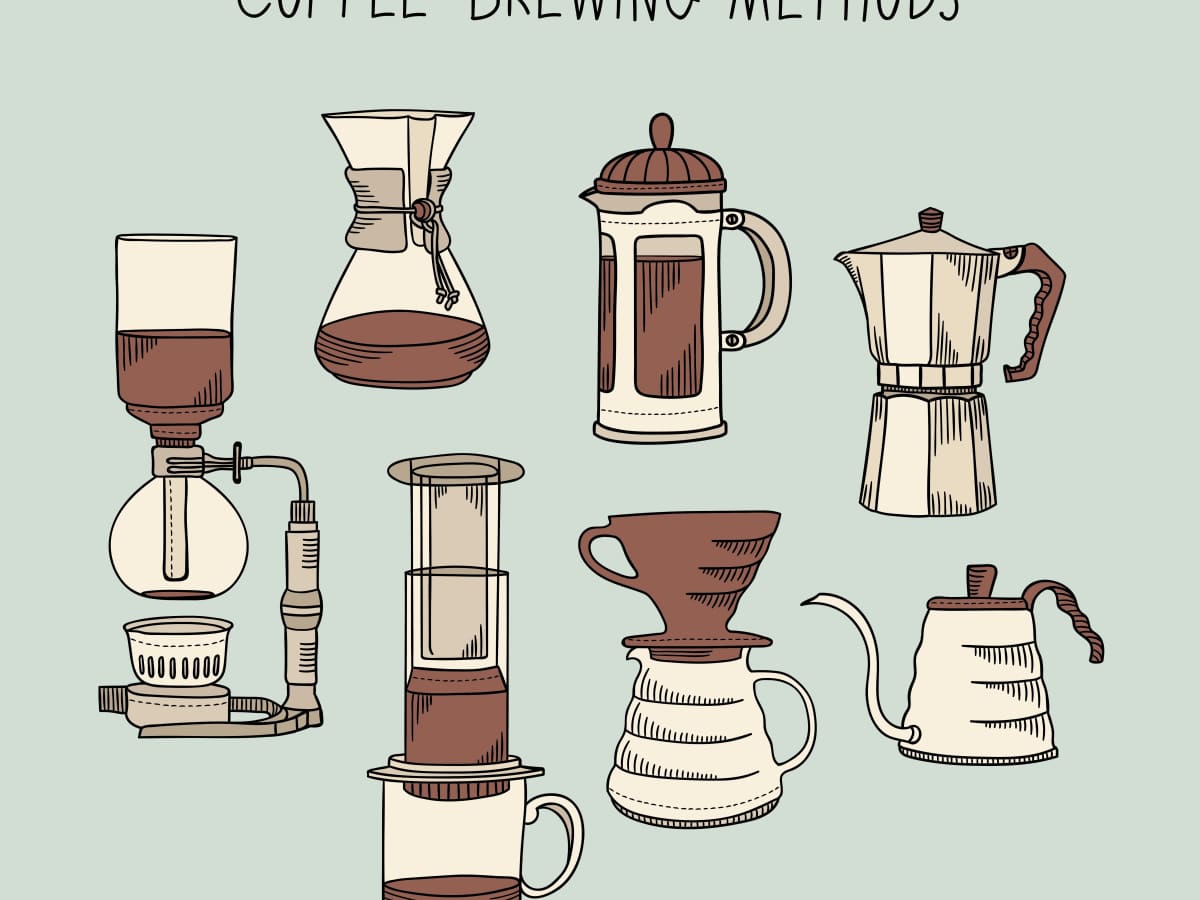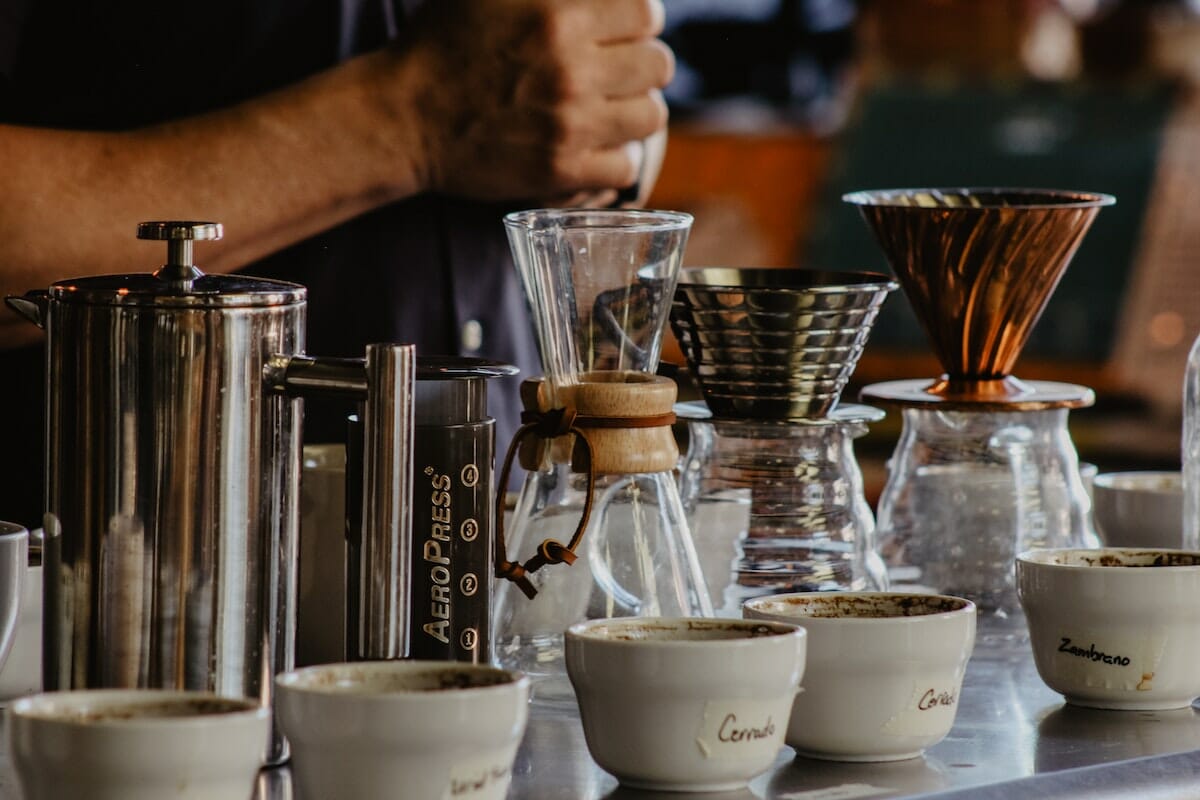Discovering the most effective Coffee Brewing Methods for Perfect Taste Each Time
Discovering the most effective Coffee Brewing Methods for Perfect Taste Each Time
Blog Article
The Science Behind Coffee Developing: Exactly How Temperature Level and Time Affect Your Drink
Recognizing the science behind coffee developing discloses that temperature level and time are not mere variables however pivotal aspects that dictate the beverage's flavor account and general high quality. As we check out the nuances of these elements, the concern arises: just how can one effectively equilibrium temperature and time to achieve that ideal mixture?
The Chemistry of Coffee Extraction
The chemistry of coffee removal explores the detailed procedures that change raw coffee beans into the fragrant drink appreciated worldwide. This change mostly involves the solubility of numerous substances present in the beans, which are affected by variables such as work dimension, water high quality, and the developing technique employed.
During the developing process, warm water serves as a solvent, removing soluble substances, including caffeine, lipids, sugars, and acids, from the coffee grounds. Each substance adds to the taste account, fragrance, and body of the final beverage. Acids are accountable for tasty and intense notes, while oils contribute to an abundant mouthfeel.
The extraction procedure is not consistent; different substances liquify at different rates. The first phases of developing remove acids and sugars, leading to a pleasant level of acidity, while prolonged removal can cause anger because of over-extraction of undesirable compounds. Comprehending these chemical interactions is essential for enhancing developing methods, as the equilibrium in between extraction time and water temperature can substantially affect the overall quality of the coffee. Ultimately, understanding the chemistry of coffee removal is vital to achieving a all-round and savory mug.
Ideal Developing Temperatures
Discovering the best brewing temperature level is necessary for opening the full possibility of coffee flavors and aromas - coffee brewing methods. Research indicates that the optimum variety for developing coffee exists between 195 ° F to 205 ° F(90 ° C to 96 ° C) Within this array, the extraction procedure successfully dissolves the preferable soluble compounds in coffee beans, bring about a well balanced and flavorful mug
Brewing at reduced temperatures, such as listed below 195 ° F(90 ° C ), may lead to under-extraction, yielding an acidic and weak mixture with soft tastes. On the other hand, brewing at temperatures surpassing 205 ° F(96 ° C) can lead to over-extraction, producing a bitter and harsh taste as a result of the extreme dissolution of unwanted substances, such as tannins.
In addition, the optimal brewing temperature level can vary depending on the coffee bean type and roast degree. As an example, lighter roasts usually profit from somewhat greater temperature levels to enhance their intricate taste profiles, while darker roasts might be much better fit to reduced temperature levels to minimize bitterness.
Ultimately, preserving precision in brewing temperature levels is essential for accomplishing a harmonious equilibrium of flavors, making sure that every mug of coffee supplies an enjoyable sensory experience.
Effect of Brewing Time
Brewing time plays an essential role in identifying the flavor profile and general high quality of coffee. Shorter developing times can result in under-extraction, leading to a weak or sour flavor, as not enough soluble substances are dissolved.
Ideal brewing time differs depending upon the approach made use of and the work dimension of the coffee. As an example, a French press commonly needs about four minutes, while coffee removal is generally completed within 25 to 30 seconds. It is necessary to calibrate brewing time in combination with other variables, such as water temperature level and coffee-to-water ratio, to achieve the preferred flavor profile.
Recognizing the influence of brewing time enables coffee lovers to fine-tune their developing techniques, ultimately improving article source the sensory experience of their cup (coffee brewing methods). With cautious focus to this variable, one can unlock the complete possibility of the coffee, exposing its one-of-a-kind attributes and subtleties
Developing Methods and Their Effects

As an example, approaches like French press and chilly mixture permit a much longer steeping time, resulting in a fuller body and robust flavor due to increased extraction of oils and soluble solids. On the other hand, coffee developing uses high stress and a much shorter removal time, producing a focused shot that highlights intense tastes and a rich crema.
Pour-over techniques, such as Chemex or V60, offer an even more controlled extraction process, permitting the brewer to adjust flow rate and water circulation, which can enhance brightness and clarity. At the same time, percolation techniques cycle water with the coffee grounds multiple times, leading to a more powerful, usually bitter taste.
Lastly, making use of paper filters versus metal filters can also impact the last taste; paper filters usually yield a cleaner mug by he said trapping oils and fine fragments, while steel filters allow more oils to pass through, adding to a fuller mouthfeel - coffee brewing methods. Recognizing these subtleties can boost the coffee experience dramatically
Tips for Improving Your Brew
A well-executed mixture can transform also the easiest coffee into a remarkable experience. Grind the beans simply prior to brewing to make best use of quality, ensuring the grind dimension matches your developing approach-- coarser for French press and finer for espresso.
Water top quality plays a critical duty; use filteringed system water devoid of contaminations. The optimal brewing temperature ranges in between 195 ° F and 205 ° F(90 ° C to 96 ° C ) Too hot can swelter the coffee, while also awesome may under-extract flavors.
Timing is similarly vital. For immersion techniques, soaking for 3 to 5 mins is optimal, whereas drip approaches generally take around 5 minutes. Experiment with brew times to discover your recommended toughness.

Final Thought
In summary, the complex relationship in between temperature and time is critical in the coffee developing process. Following optimal brewing temperature levels in between 195 ° F and 205 ° F, along with exact timing tailored to each method, makes certain the wanted taste account is achieved. Understanding these clinical concepts empowers individuals to refine their developing strategies, eventually leading to a much more balanced and pleasurable coffee experience. Mastery of these aspects is important for any coffee fanatic looking for excellence in their drink.
Comprehending the science behind coffee developing reveals that temperature level and time are not mere variables but critical components that dictate the beverage's taste profile and general high quality. Understanding these chemical communications is vital for maximizing brewing strategies, as the equilibrium in between extraction time and water temperature can considerably influence the total quality of the coffee.Brewing time plays an essential duty in figuring out the flavor profile and total quality of coffee. By concentrating on these components-- bean quality, grind dimension, water temperature, steeping time, and ratio-- you can boost your coffee brewing process, resulting in a constantly superior mug.
In recap, the intricate partnership between click site temperature level and time is critical in the coffee brewing procedure.
Report this page